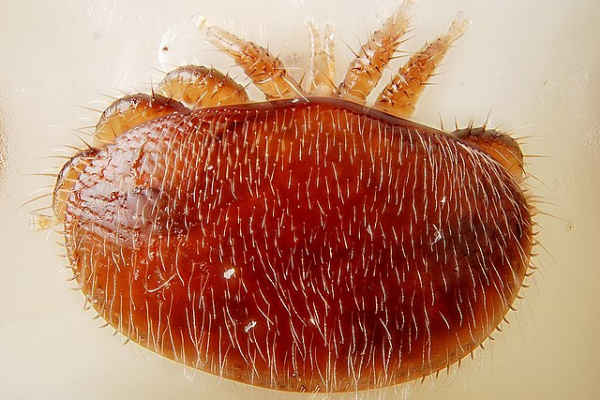BIOSECURITY
After holding off the varroa mite for much longer than most beekeeping nations, Australian defences were finally breached by the invasive pest in June 2022. Apiculture New Zealand Communications Coordinator Karen Allan caught up with Australian Honey Bee Industry Council (AHBIC) Chief Executive Officer Danny Le Feuvre to get an update on the current situation on the ground in Australia.
Although varroa has established itself in New South Wales, particularly around the coastal cities of Sydney and Newcastle, and has spread to Victoria, it hasn’t spread significantly westward, says Danny.
“It has not spread as far or as quickly as we expected,” he says.
Danny attributes this to the transition to the management programme with a key goal of “slowing the spread”.
Following the initial varroa incursion at the Port of Newcastle, Australia embarked on an eradication programme. In Spring 2023 it was agreed that eradication was no longer feasible and the National Management Group (NMG), responsible for the response, announced the transition to a varroa management plan, which began in February 2024. The $16m cost of the plan is being shared between governments and affected industries. Added to the cost of the eradication effort, the total response cost to date is $100m.

Varroa destructor. Photo: Gilles San Martin, Flickr.
The vast majority of beekeepers are not yet having to manage varroa, says Danny. Reports from last spring have shown low detection rates across New South Wales. Most of the significant infestation cases are happening in recreational hives around Sydney and Newcastle, with heavier impacts on those that are not being managed well.
Commercial beekeepers are managing it well and there have been no reports of significant losses reported to AHBIC, says Danny.
Danny says that luckily Australia appears to be free of deformed wing virus, one of the most damaging bee viruses carried by varroa mites in New Zealand, which is making the pest easier to manage. Bees across Australia are being tested to determine what viruses are currently present in the population, allowing them to monitor their impact on the bees.
Through funding from the transition to management programme, the Australian National University started the country’s first colony loss survey in November, which will provide more data around seasonal losses now and into the future.
The management plan
Advice from New Zealand and other countries already dealing with varroa mite is that the best way to slow the spread of the pest is through beekeeper education. So, part of the transition from eradication to management has included an investment in training. The plan includes 110 workshops across country, with 70 already rolled out.
There has been good attendance from beekeepers, and they have said they’re much more comfortable about managing varroa after attending the workshops, says Danny.
State border regulations continue to be in place to slow the spread with apiary officers spot-checking high-risk movements. Beekeepers are allowed to move across borders but have to do alcohol washes first.
Around the country an additional 35 extension officers have been employed, focused on supporting beekeepers and varroa extension for beekeepers. Their roles differ depending on the state. In New South Wales, for example, they have a management role, while in other states they focus on awareness. The officers ensure beekeepers are comfortable in management of varroa and assist with surveillance. Danny is hopeful some of those roles may continue after the two-year management term is up.
Danny is confident that the management plan is appropriate given the current knowledge, noting that it takes into account the changing situation. Lots of fine adjustments have been made as more is learned about how the mites are behaving, he says.
For example, alcohol washes were initially advised once every 16 weeks, but in varroa-established areas such as Sydney and Newcastle, there have been colony losses within those 16 weeks due to feral colony reinfestation. Alcohol washes are now recommended every four weeks in areas dealing with established populations of mites.
Treatment obstacles
Getting treatment options regulated, particularly oxalic acid strips, has been a long, slow process and a constant battle, says Danny.
Beekeepers have access to all the major treatment options with Api-Bioxal being approved for fogging and dribbling in November on an emergency use permit. All the other major treatment options are either fully registered or on emergency use permits. Danny says the emergency use permits are only a temporary solution, and AHBIC is continuing to work closely with manufacturers to get more options fully registered for use in Australia.
A number of Australian researchers are looking at new treatments and the AHBIC is also collaborating with New Zealand researchers.
Feral bees
One of the causes of high re-infestation rates of managed hives in the initial phase of the incursion has been the spread of varroa through the feral bee population.
Australia hosts around 90–150 feral bee colonies per km2 across most landscapes. This is considerably larger than New Zealand’s pre-varroa feral bee population, which was estimated to be about 20 colonies per km2.
While there are reports of feral bee colonies collapsing around Sydney and Newcastle, Danny says varroa is not yet fully established in the wider feral bee population.
The potential impact on feral bee colonies has raised concerns around pollination. About 35 horticulture industries, in particular apples, pears, and cherry crops, are dependent in part on feral bee pollination as well as honey bee pollination.
The AHBIC is involved with a pollination strategy aimed at covering future pollination needs for the horticulture industry. This is a five-year project that also includes native honey bees and other pollinators.
Danny says they are working on communicating with growers on the issue and encouraging them to start building relationships with beekeepers. It seems, however, that many growers are not aware of the potential ramifications of the problem.
“We are struggling to get traction with growers and for them to understand the issue. They’re going to need to see some lived experiences first,” says Danny.

Danny Le Feuvre. Photo supplied.
